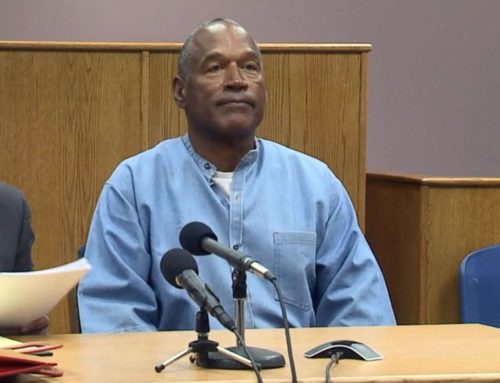Gun related violence and violent homicides have haunted the United States over the past three decades. In fact, 2015 saw a 1.7 percent overall rise in violent crime in the United States from 2014, with homicides being up 6.2 percent specifically. Unfortunately even small to mid-size cities in New York State have seen spikes in violent crimes and homicides. In the first five months of 2015 Syracuse, New York saw a 50 percent increase in gun violence, the city made headlines with 10 shootings on the 4th of July.[2] During the first two months of 2016 in Buffalo, New York a person was shot every other day, with a total of 34 shootings and 4 fatalities.[3] It has become clear that there is an underlying problem fueling all the violence in New York State. This problem is gang violence. Community leaders in Buffalo maintain that all of the shootings thus far in 2016 are tied to rival gang disputes.[4] While in Syracuse, in 2015 state, federal, and local authorities conducted a joint operation dubbed Operation Salt City, during which 248 people were arrested, but only 20 guns recovered. The operation was meant to curb gang violence with its objective being to get weapons and gang members off the street.[5] However, despite law enforcement taking large numbers of citizens off the street, the violence continues. This begs the question, is arresting and placing people in jail the right solution? There are two competing philosophies that drive the way we treat those convicted of gun violence and violent homicide. The first philosophy essentially states that we must punish those who commit crimes to deter others from doing the same. The second philosophy states that we must rehabilitate those convicted of crimes so that they can be re-introduced into society, and as a result society as a whole will be better off. However traditional approaches to sentencing and law enforcement in the United States tend to focus heavily on punishment, and not so much on rehabilitation. Turning to the present problem of gun violence, and violent homicide, it has become clear that simply punishing those who commit these types of crimes is not going to make the crime rates decrease. The city of Richmond, California has recognized this fact, and embraced a new method of dealing with the issue of violence. Richmond is a city of about 100,000 people located north of Berkeley, and was once one of the most violent cities in America.[6] Following the economic crash in 2007 violence in Richmond spiked dramatically, with 47 killings that year. By comparison neighboring Oakland only had 30 killings per 100,000 people that year.[7] 47 killings per 100,000 people was 8 times the national average in 2007.[8] Although the violence was largely fueled by gang members, it was clear that simply locking up the gang members was not solving the problem. In response to the desperate situation facing the city, members of the community and city officials formed the Office of Neighborhood Safety (“ONS”). The ONS recognized that the state of the community was basically producing gang members. Everyone was unemployed, drugs were an easy way to make money, and gangs controlled the drug trade. Young people were being brought up in an environment similar to a warzone where violence was part of everyday life. In order to reach the hearts and minds of the teens and young adults that were committing a majority of the gang violence the ONS launched Operation Peacemaker.[9] Operation Peacemaker hired reformed ex-convicts, some of whom had spent close to 20 years in maximum security prison for crimes like second degree murder. These former convicts became known as Neighborhood Change Agents.[10] The Neighborhood Change Agents, some of them former gang members, were sent into the most violent neighborhoods to speak to teens and young adults. [11] The Change Agents focused specifically on teens and young adults who had been accused of the most violent crimes. First, the Neighborhood Change Agents make themselves available to the neighborhoods where the most violence occurs, they put the word out that they would simply like to talk to the teens and young adults who have had run-ins with the law, or anyone in the neighborhood who is willing to speak about the violence.[12] The meetings between the former convicts and the youth who are responsible for the most violence are meant to build trust, trust that the program is not seeking to “scare them straight” with threats of incarceration, but that the program is honestly seeking to help them, and to make their lives better. The first year Operation Peacemaker was put into action 25 teens and young adults who had been accused of some of the most violent crimes agreed to participate in the program.[13] They routinely met with the Neighborhood Change Agents to discuss the biggest obstacles in their lives preventing them from being successful in society. They were given access to jobs, college tours, interviews with local business owners, and trips outside of Richmond. In return the young adults had to turn in their weapons and agree to stay out of the gang atmosphere. If, after six months they had kept their word, they were eligible for a monthly stipend of up to $1,000 dollars to help get them on their feet.[14] At first law enforcement, mainly the police, was very critical of the program, which was referred to by its critics as “cash for criminals”. However critics have been silenced due to the results the program has achieved. 94 percent of the at-risk young adults who entered into Operation Peacemaker are still alive, and 79 percent have not re-offended.[15] As a result the community and the city have built more trust, and the city has seen a 76 percent drop in violent crime rates.[16] After looking at the methods employed by Operation Peacemaker it is clear that the solution to New York’s as well as America’s problem with violence lies with understanding the communities most affected, rather than by simply locking up the members of those communities. If a community is descending into chaos due to social and economic hardships, does it not make sense to offer those communities help and support, rather than punishment? We as a society need to recognize that to end the cycle of violence the environments that foster violence need to be changed and made healthy again. [1] https://www.washingtonpost.com/news/post-nation/wp/2016/01/19/fbi-murders-and-other-violent-crimes-increased-last-year/Community Based Programs Offer A Solution
Conclusion
[2] http://www.syracuse.com/crime/index.ssf/2015/07/syracuse_shootings_so_far_this_year_in_2015.html
[3]http://live.buffalonews.com/2016/03/04/so-far-2016-gunfire-has-erupted-every-other-day-buffalo-shootings-map/
[4] Id.
[5]http://www.syracuse.com/crime/index.ssf/2015/09/248_people_arrested_in_syracuse_during_operation_to_fight_gang_violence.html
[6] http://www.cnn.com/2016/05/19/health/cash-for-criminals-richmond-california/index.html
[7] Id.
[8] Id.
[9] http://www.cnn.com/2016/05/19/health/cash-for-criminals-richmond-california/index.html
[10]http://www.cnn.com/2016/05/19/health/cash-for-criminals-richmond-california/index.html
[11] Id.
[12]http://www.cnn.com/2016/05/19/health/cash-for-criminals-richmond-california/index.html
[13] http://www.cnn.com/2016/05/19/health/cash-for-criminals-richmond-california/index.html
[14] Id.
[15] http://www.cnn.com/2016/05/19/health/cash-for-criminals-richmond-california/index.html
[16] Id.
Community Based Program Sees Homicide Rates Plummet
[1] Cities like Washington D.C, Baltimore, Chicago, and New York have had spikes in violent crimes and homicides not seen since the late 1980’s and early 90’s.




